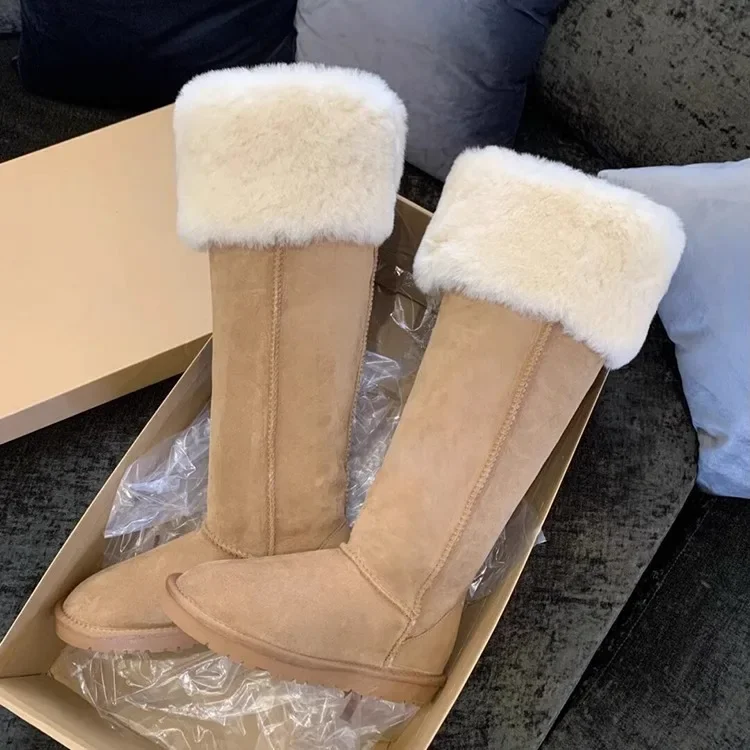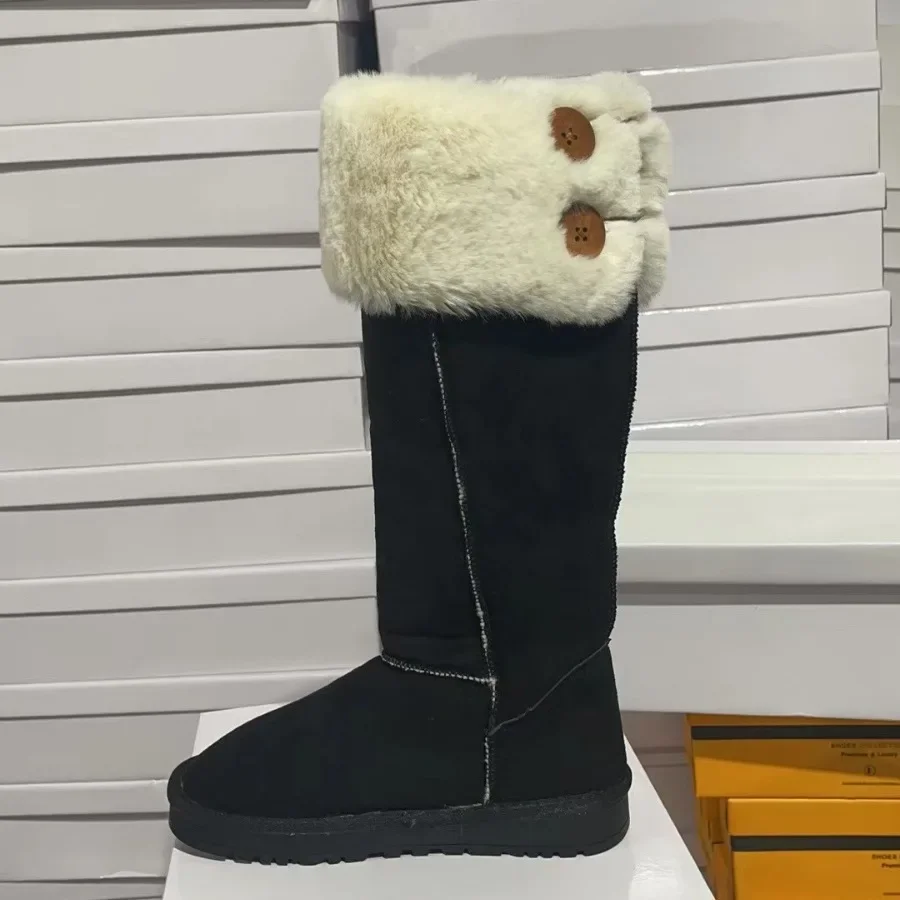Identifying Your Winter Boot Needs
Selecting the good winter boots is crucial for comfort and safety in cold weather. Consider the type of activities you’ll be doing – will you be trekking through deep snow, navigating icy sidewalks, or simply needing warmth for everyday use? Activity type influences boot features like insulation level, height, and tread design. Climate is another factor; colder regions with severe temperatures and snowfall require more insulation and waterproofing. Whereas, milder winters may only necessitate water-resistant and less insulated options. Finally, consider personal preferences in fit and style, ensuring the boots align with your needs while supporting an active winter lifestyle.

Essential Features for Optimal Warmth and Protection
When shopping for good winter boots, warmth and protection are top priorities. Essential features include sufficient insulation, often measured in grams, to retain heat and maintain foot warmth. Look for boots with high-quality insulating materials like Thinsulate or down. A well-constructed outer shell, typically made of leather or synthetic materials, shields against the cold and dampness of winter.
Proper closure systems, such as laces or zippers, ensure a snug fit, keeping the warmth in and cold out. To protect toes, seek boots with reinforced toe caps that provide an extra barrier against accidental impacts, which can occur during winter activities. A padded collar and tongue add comfort while sealing in warmth, creating a cozy environment for your feet.
Remember, these features should balance warmth and protection without sacrificing comfort. Quality winter boots will offer an optimum combination of all these elements, allowing confident and comfortable steps through the coldest months.
Evaluating Tread and Traction for Icy Conditions
When facing icy sidewalks or slippery trails, the tread and traction of your winter boots are critical for preventing falls and maintaining stability. Here are some tips for evaluating tread and traction features:
- Look for deep lug patterns: Deep lugs on the sole of the boot grip the ground better, reducing the risk of slipping on ice.
- Consider material: Rubber soles offer good traction and resist hardening in cold temperatures, maintaining their grip.
- Opt for specialized designs: Some boots come with tread designs specifically aimed at navigating ice, such as multidirectional lugs that catch snow and add stability.
- Check for adaptable options: Certain boots are compatible with additional traction devices like crampons or ice cleats, offering flexibility based on the conditions.
Prioritize boots with excellent tread and traction features to safely enjoy winter activities, keeping in mind your specific environment and the severity of icy conditions you’ll encounter.
Importance of Waterproofing in Winter Boots
The risk of wet feet in winter is not just about discomfort, it’s a matter of safety. Good winter boots with proper waterproofing are vital to keep feet dry and maintain body heat. When evaluating boots, search for features like waterproof membranes, seam-sealed construction, and treated materials that repel moisture. Brands may offer proprietary waterproof technologies, such as GORE-TEX or their own in-house solutions, which are equally effective. A key sign of reliable waterproof boots is their ability to withstand submersion in water without leakage. Always inspect for reinforced waterproof areas, especially where the sole meets the upper. A waterproof boot not only ensures dry feet but also prolongs the life of the boot by protecting against the elements that can cause material degradation over time.
The Balance Between Insulation and Breathability
When selecting good winter boots, it’s essential to strike a balance between insulation and breathability. This balance ensures that your feet stay warm without overheating and sweating, which can lead to discomfort and even chilliness as moisture accumulates. Here’s how to evaluate the breathability and insulation of winter boots:
- Choose the right insulation: Opt for boots with high-quality insulating materials that offer warmth without excessive bulk. Look for insulation ratings suitable for the expected temperatures.
- Check for breathability features: Boots with breathable membranes allow moisture to escape while blocking external water, promoting a dry and comfortable environment inside the boot.
- Consider activity level: If you’re highly active outdoors, you’ll generate more body heat, necessitating boots with better breathability to prevent sweat buildup.
- Evaluate linings: Soft inner linings that wick away moisture contribute to a dry and warm experience. Materials such as fleece or synthetic fabrics are excellent choices for lining.
- Assess boot construction: A well-constructed boot should seamlessly integrate insulation and breathability, ensuring that your feet maintain an optimal temperature.
Always remember that a good winter boot will provide sufficient insulation while allowing your feet to breathe. This combination is crucial for keeping your feet warm, dry, and comfortable during various winter activities.

Understanding Fit: Sizing Tips for Winter Boots
Proper fit is crucial for winter boot performance. Here are tips to ensure the best fit:
- Measure your feet: Feet can change size over time, so measure them before purchasing.
- Account for socks: Try boots with both thick and thin socks for a versatile fit.
- Heel slip: A little slip is normal, but too much may lead to blisters.
- Room to wiggle: Ensure there’s room to wiggle your toes without feeling cramped.
- Snug, not tight: Boots should be snug around the midfoot but not constricting.
- Walk around: Test boots by walking to check for any discomfort or slip.
- Consider insoles: If you need additional support, consider space for insoles.
Remember, well-fitting boots enhance warmth, comfort, and stability on winter treks.
Additional Considerations: Height and Style
When deciding on the perfect pair of winter boots, height and style also play significant roles. Boot height is not just a matter of preference but a practical consideration for warmth and snow protection. Taller boots, extending mid-calf or higher, are ideal for deep snow conditions, offering more coverage and preventing snow from entering the boot. On the other hand, shorter boots, such as ankle-high options, can be suitable for lighter snow and more urban environments, providing ease of movement and a casual look.
Style is a personal choice and varies widely among individuals. However, it’s worth considering a style that complements your winter wardrobe and fits the occasions where you’ll wear the boots. From sleek and modern designs to rugged and traditional looks, the style of a winter boot can enhance your overall appearance while still providing essential functionality. For those seeking timeless appeal, classic designs with minimal embellishments may offer versatility across various outfits and settings. Alternatively, contemporary styles with bold features can make a fashion statement while keeping your feet warm and dry.
In summary, when choosing winter boots, consider the height for practical snow protection and the style for a seamless blend with your personal aesthetic. Ultimately, the best winter boots are ones that meet your needs for warmth and function while also reflecting your individual taste.
Care and Maintenance of Winter Boots
Proper care extends the lifespan and functionality of your winter boots, keeping them in prime condition for every frosty adventure. Here’s a practical guide to maintaining your snowy season stalwarts:
- Regular Cleaning: After each use, remove dirt and salt with a soft-bristled brush. For stubborn grime, use a mild soap solution, then wipe clean.
- Dry Thoughtfully: Let boots air dry at room temperature. Avoid direct heat sources, which can damage materials and reduce boot longevity.
- Waterproofing Check: Inspect and reapply waterproofing treatments periodically, especially before heavy use seasons.
- Storage Wisdom: During off-seasons, store boots in a cool, dry place. Insert shoe trees or stuffing to help retain shape.
- Odor Control: Use foot powders or charcoal inserts to manage moisture and keep your boots smelling fresh.
By implementing these simple care steps, you’ll ensure your good winter boots stay ready to confront the coldest days with confidence.

